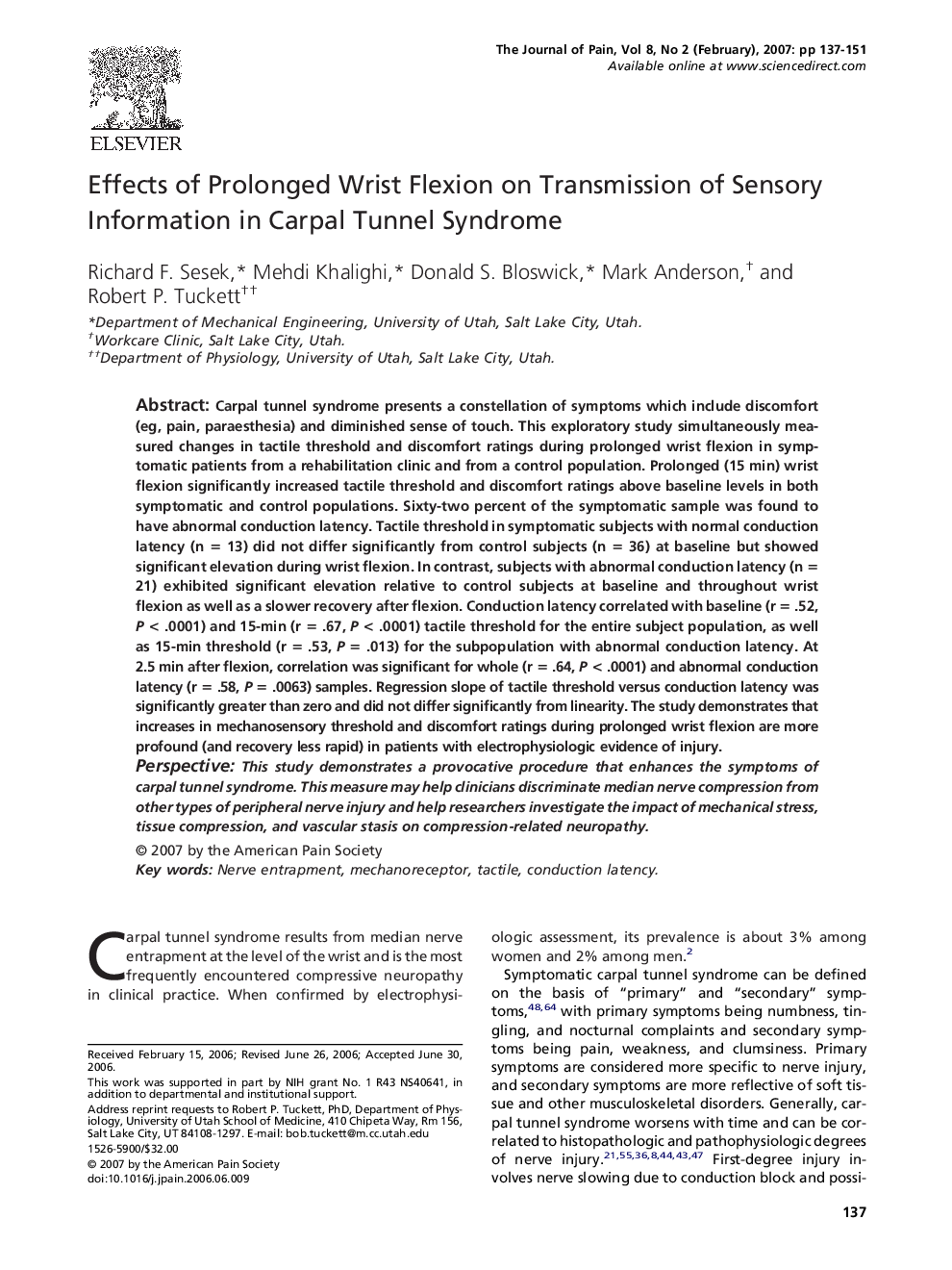| Article ID | Journal | Published Year | Pages | File Type |
|---|---|---|---|---|
| 2729411 | The Journal of Pain | 2007 | 15 Pages |
Carpal tunnel syndrome presents a constellation of symptoms which include discomfort (eg, pain, paraesthesia) and diminished sense of touch. This exploratory study simultaneously measured changes in tactile threshold and discomfort ratings during prolonged wrist flexion in symptomatic patients from a rehabilitation clinic and from a control population. Prolonged (15 min) wrist flexion significantly increased tactile threshold and discomfort ratings above baseline levels in both symptomatic and control populations. Sixty-two percent of the symptomatic sample was found to have abnormal conduction latency. Tactile threshold in symptomatic subjects with normal conduction latency (n = 13) did not differ significantly from control subjects (n = 36) at baseline but showed significant elevation during wrist flexion. In contrast, subjects with abnormal conduction latency (n = 21) exhibited significant elevation relative to control subjects at baseline and throughout wrist flexion as well as a slower recovery after flexion. Conduction latency correlated with baseline (r = .52, P < .0001) and 15-min (r = .67, P < .0001) tactile threshold for the entire subject population, as well as 15-min threshold (r = .53, P = .013) for the subpopulation with abnormal conduction latency. At 2.5 min after flexion, correlation was significant for whole (r = .64, P < .0001) and abnormal conduction latency (r = .58, P = .0063) samples. Regression slope of tactile threshold versus conduction latency was significantly greater than zero and did not differ significantly from linearity. The study demonstrates that increases in mechanosensory threshold and discomfort ratings during prolonged wrist flexion are more profound (and recovery less rapid) in patients with electrophysiologic evidence of injury.PerspectiveThis study demonstrates a provocative procedure that enhances the symptoms of carpal tunnel syndrome. This measure may help clinicians discriminate median nerve compression from other types of peripheral nerve injury and help researchers investigate the impact of mechanical stress, tissue compression, and vascular stasis on compression-related neuropathy.
